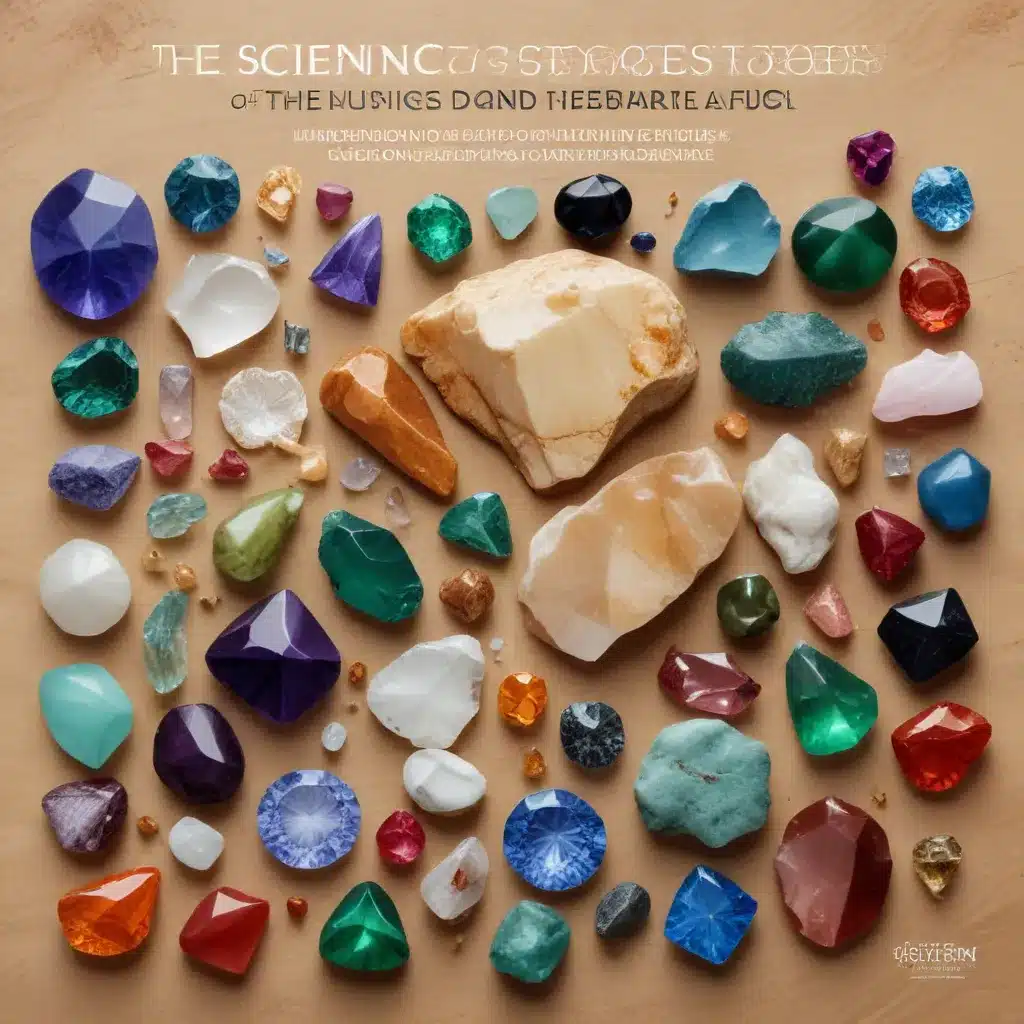
At the Shelby Gem Factory, we believe that gemstones are more than just beautiful adornments – they are true marvels of nature, forged over millennia and imbued with an innate resilience that rivals even the most advanced human creations. As experts in the world of fine jewelry, we’re constantly in awe of the science behind the toughness and durability of these natural treasures, and we’re excited to share our insights with you.
Gemstone Composition and Structure
The remarkable strength and longevity of gemstones can be traced back to their fundamental building blocks – the atoms and molecules that come together to form their unique crystal structures. Atomic bonding, the intricate dance of electrons that holds these structures together, is the key to understanding a gem’s durability. Diamonds, for example, are renowned for their unparalleled hardness, a result of the incredibly strong covalent bonds between their carbon atoms.
But it’s not just the strength of these bonds that matters; the way the atoms are arranged in a crystal lattice also plays a crucial role. Some gemstones, like quartz, have a tightly packed, orderly arrangement that gives them exceptional resistance to chipping and cracking, while others, like mica, have a more loosely structured lattice that makes them susceptible to cleavage and fragmentation.
Interestingly, the presence of impurities and inclusions within a gemstone can also contribute to its overall toughness. While these blemishes may detract from the gem’s visual perfection, they can actually serve to reinforce the crystal structure, helping it withstand the rigors of everyday wear and tear.
Factors Affecting Gemstone Toughness
When it comes to the durability of gemstones, there are several key factors to consider, and the interplay between them can be quite complex.
Hardness, as measured by the ubiquitous Mohs scale, is undoubtedly one of the most important indicators of a gem’s resistance to scratching and abrasion. Diamonds, ranking a solid 10 on the Mohs scale, are virtually impervious to everyday wear and tear, while softer gems like opals (Mohs 5-6.5) are far more prone to surface damage.
However, hardness is not the whole story. Cleavage, or the tendency of a gemstone to split along distinct planes, can also have a significant impact on its toughness. Diamonds, for example, despite their incredible hardness, can be quite vulnerable to chipping and fracturing due to their perfect cleavage.
The impact resistance of a gemstone is another crucial factor. Some gems, like quartz and jade, are renowned for their ability to withstand sudden blows without shattering, while others, like emeralds and tanzanite, are more easily fractured.
Finally, a gem’s thermal expansion characteristics can also play a role in its durability. Gems with high thermal expansion, like citrine, are more prone to developing internal cracks and fractures when exposed to rapid temperature changes, while more thermally stable gems like sapphires can better withstand the stresses of everyday wear.
Gemstone Processing and Treatments
The journey from raw crystal to polished gemstone is a fascinating one, and the various techniques involved can have a profound impact on a gem’s toughness and longevity.
Cutting and polishing processes, for example, can actually enhance a gem’s durability by strategically removing weak points and maximizing the strength of its crystal structure. Skilled gem cutters carefully consider factors like facet angles and girdle thickness to create pieces that are not only visually stunning but also highly resistant to damage.
In addition to mechanical processing, some gemstones undergo various treatments to improve their appearance and performance. Heat treatment, for instance, can enhance the color and clarity of many gems, but it can also alter their internal structure and affect their durability. Coatings and enhancements like fracture filling can also have a significant impact on a gem’s long-term resilience.
Gemstone Classification and Durability
With so many factors at play, it’s no wonder that gemstone durability is a complex and multifaceted topic. Fortunately, the industry has developed a comprehensive system for evaluating and categorizing the toughness and wearability of various gems.
The Mohs hardness scale, of course, is the gold standard for assessing a gem’s resistance to scratching, but it’s just one piece of the puzzle. Gemologists also consider a gem’s toughness grade, which takes into account its impact resistance and cleavage properties, as well as its stability, or ability to withstand exposure to chemicals, heat, and light.
By understanding these different durability factors, jewelry enthusiasts and prospective buyers can make informed decisions about which gems are best suited for their needs. Delicate stones like opal or tanzanite, for example, may be better suited for pendants or earrings, where they’re less likely to suffer accidental blows, while hardier gems like sapphire or topaz can often withstand the rigors of daily wear as rings or bracelets.
At Shelby Gem Factory, we’re passionate about educating our customers on the science behind gemstone toughness, because we believe that true appreciation for these natural wonders comes from understanding their inner workings. Whether you’re shopping for a dazzling diamond or a striking synthetic moissanite, knowing the ins and outs of gemstone durability can help you make a purchase that will stand the test of time.
So, the next time you admire the brilliant sparkle of a gemstone, take a moment to marvel at the incredible forces that have shaped and strengthened it over the course of millennia. These are the true treasures of the earth, and we’re honored to share their stories with you.

